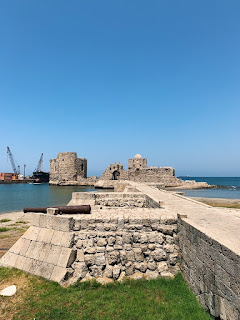 |
| Esta pieza es de Torre Alta- Gadir (Cadiz) Circa 125-130 |
Melk-art es el nombre fenicio de una deidad principal de la ciudad de Tiro, hoy actual Libano tambien se asocia en conjunto con la ciudad actual de Cadiz y Cartagho en Tunez, y la ciudad de Cartago en del territorio Español
Melkart estaba profundamente asociadio con el dios Baal, Hammon, el consorte de la diosa tanit la diosa suprema de los cartaghinenses y se identificaba con el dios fenicio Mot de Ugarit, el dios Acadio y Asirio Mu-tu (dios del inframundo) y el dios babilonico Nergal.
El Templo Fenicio de Melkart localizado en la gran ex-urbe de Amrit .
Los santuarios de melkart en cartago (moderno Tunez) and Amrit estan decorados con motivos y simbolos Anunaki, Como la serpiente de Arwad que representa la sabiduria, y la ciencia. La Luna Creciente de Tyrian representa un nuevo nacimiento y el triangulo delta anununaki representa el equilibrio del hombre, tambien Delta es una letra principal del alfabeto fenicio
 |
| Estatua Actual de Melkart en el Museo Arqueologico de Cadiz, Esp. |
En muchas ocaciones el dios melkart fue protaginista de varias controversias, tras ser encontrado enterrado, en lugares en construcción, en excavaciones arqueologicas y representado en monedas, tambien por muchos años lo asociaron a Osiris por el aspecto, la realidad es que demuestra la conexión entre las 2 ciudades que se llamaban por el mismo nombre de ''Cartago'', ademas de ser parte de un mismo imperio dependientes de la gran via maritima del mediterraneo y que tenian el mismo dios. La actual España en su seno formaba parte de las Colonias Fenicias.



























